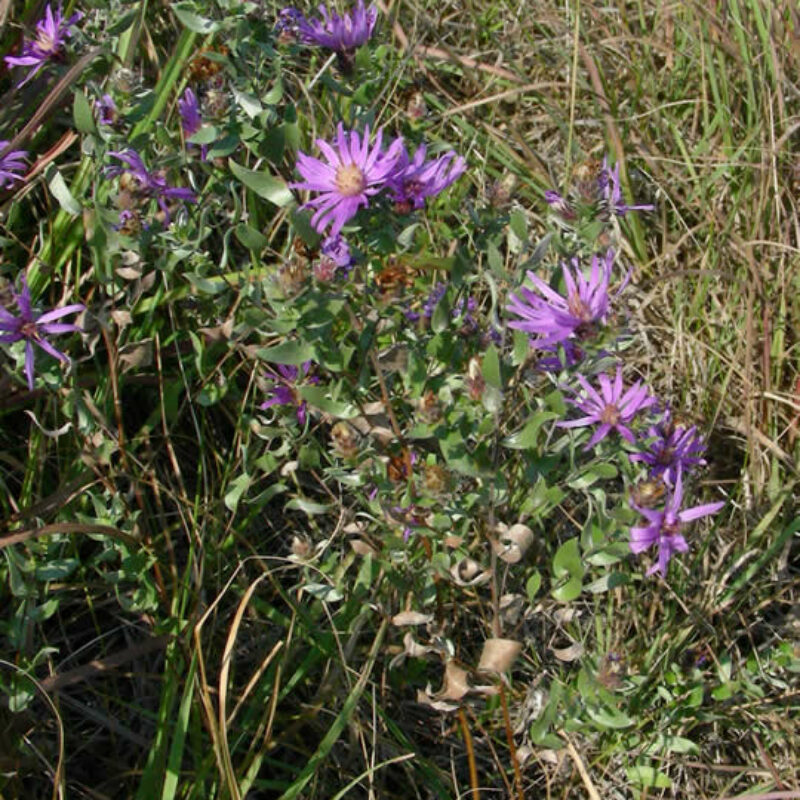Silky AsterSymphyotrichum sericeum
The leaves of Silky Aster are densely covered in soft hairs that are indeed silky to the touch.
USDA symbol: SYSE2
General Information
| Plant Type | Forb |
|---|---|
| Height | 2 feet |
| Light Exposure | Sun |
| Soil Moisture | Dry, Medium |
| Bloom Color | Yellow, Purple, Pink |

Tolerances
| Flooding / Inundation Tolerance | Low |
|---|---|
| General Resilience | 6 |
| Salt Tolerance | Medium |
| Stress Tolerance | Drought Tolerant, General Disturbance |
Pollinator Value: Medium
| Bloom Months | August to September |
|---|---|
| Larval Host of | Bees |
| Specific Pollinators Hosted | Numerous bee species |
| Pollinator Benefit | Insect Pollinated, Provides Nectar, Stem Nesting, Supports Generalists |
Project Planning
| Project Type | Boulevard, Rain Garden, Shoreline Buffer |
|---|---|
| Coefficient of Conservatism | 9 |
| Herbivore Sensitivity | Medium |
| Lifespan | Perennial |
| Rate of Spread | Slow |
| Soil Stabilization | Shallow |
| Vegetative Reproduction | Clonal |
Range
| County | Anoka, Becker, Benton, Big Stone, Blue Earth, Brown, Carver, Cass, Chippewa, Chisago, Clay, Cottonwood, Dakota, Douglas, Faribault, Fillmore, Freeborn, Goodhue, Grant, Hennepin, Houston, Jackson, Kandiyohi, Kittson, Lac qui Parle, Le Sueur, Lincoln, Lyon, Mahnomen, McLeod, Morrison, Mower, Murray, Nobles, Norman, Olmsted, Otter Tail, Pipestone, Polk, Pope, Ramsey, Redwood, Renville, Rice, Roseau, Sherburne, Sibley, Stearns, Stevens, Swift, Todd, Traverse, Wabasha, Washington, Winona, Wright, Yellow Medicine |
|---|---|
| Ecoregion | Driftless Area, Lake Agassiz Plain, North Central Hardwood Forests, Northern Glaciated Plains, Northern Lakes and Forests, Northern Minnesota Wetlands, Western Cornbelt Plains |
| Approximate Eco Province | Eastern Broadleaf Forest, Laurentian Mixed Forest, Prairie Parkland, Tallgrass Aspen Parklands |
